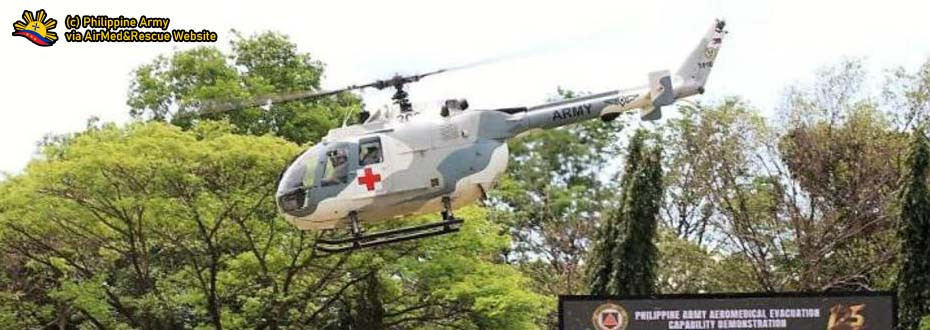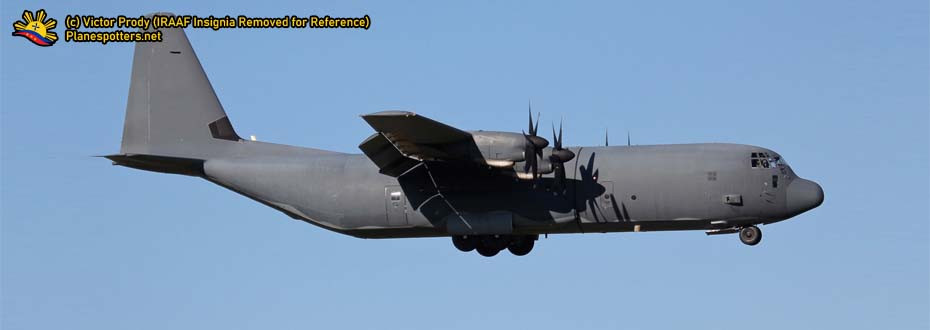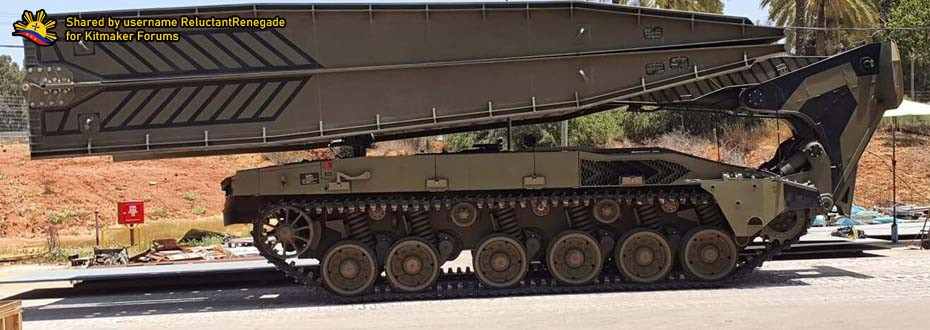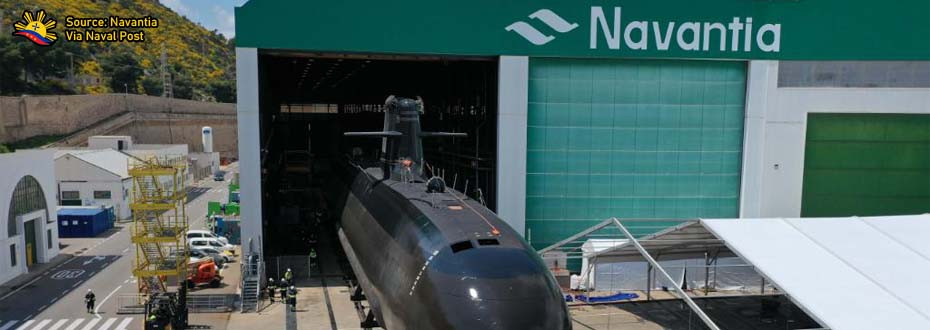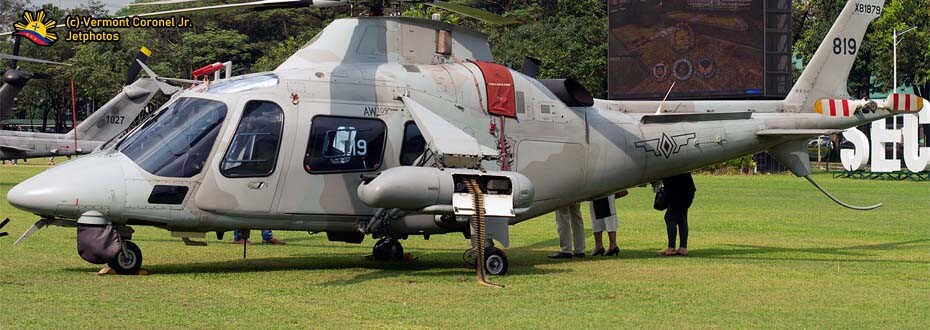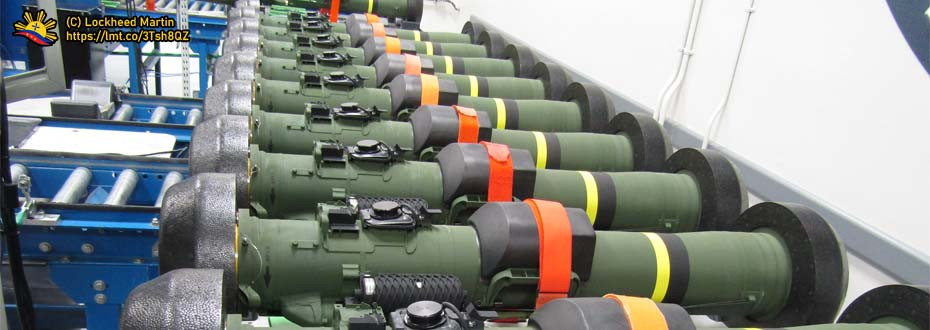Although this is not part of the service branch's Attack Helicopter Acquisition Project wherein it is being participated by two prospective bidders, it is still worthy for this military platform to be discussed to give a broader idea regarding the feasibility that surrounds this offer made by Boeing to the Philippine Air Force.
AS PROVIDED IN THE NEWS
 |
| This platform is being looked like one of the preferred candidates for the Philippine Air Force Attack Helicopter Acquisition Project. Image Source. |
The development of the report send interesting details to the current Modernization Plans taken by the Philippine Air Force wherein the current project involves primarily two main candidates which are either the Bell AH-1Z Viper from the United States and the Turkish Aerospace Industries T-129 ATAK Helicopter which in itself is a derivative of the Italian Leonardo A-129 Mangusta that is no longer in production.
Currently, the Philippine Air Force already obtains its own dedicated Attack Helicopters which is the first for the organization with its fleet usually consist of light attack variants such as the AW-109 and the MD-520 helicopters, in which such dedicated platform came in the form of the ex-Jordanian AH-1S Tzefa Helicopters that the said country also obtained it from Israel.
The current inventory of the Philippine Air Force renders the Bell AH-1Z Viper into the advantage, citing a better logistics chain on spare parts and operational use as its compatibility goes with the UH-1 Hueys and the AH-1S that the organization obtains.
Despite these things, it is still worth noted that the potential deal for AH-64 Apache alongside the Viper makes this deal interesting in the sense that this military branch of the Armed Forces of the Philippines also sees the capabilities of the AH-64 as something that the country needs on its defense.
This arises the potential idea of having these platforms in the Philippine Air Force wherein it will render it the first for the service branch to obtain them, ideally helping the country obtain its capability for Close Air Support or CAS operations especially that the country is still doing its counterinsurgency or COIN operations in Mindanao with the areas still plagued by radical terrorists still ravaging the way peace and security is being done on those places affected by it.
That being said, we will discuss the attack helicopter platform in detail as well as the deal that comes along with it as it goes from one of the two notices obtained from the Defense Cooperation Security Agency or DSCA as well as its usual information on the development of the platform as well as other relevant details that provides the whole picture of the main topic for this article.
THE MANUFACTURER AND ITS PROPOSAL
See related: The Idea of having AGM-84 Harpoon Missiles to the Philippine Air Force (dated January 14, 2020)
 |
| The production line of the Boeing AH-64 Apache on its plant in the United States. Image Source. |
Before the DSCA notice on the prospective foreign military sales of both the Bell AH-1Z and Boeing AH-64 Apache, let it be noted that in December of 2019, the representatives of the said defense industry visited the Philippines and marketed this helicopter platform before the Philippine Government, implying that it is helpful for the country's defense especially with its ongoing spat with China in the West Philippine Sea.
At that time also came with the report of the Philippine Department of National Defense's deal regarding the AGM-84 Harpoon Missiles wherein it goes along with the still-pending Multirole Fighter Jet Acquisition Program of the Philippine Air Force wherein one of the candidates, the Lockheed Martin F-16 Viper Block 70/72 is still pending the same approval to the United States Congress as the ones for the AH-1Z Viper and AH-64 Apache.
The prospective marketing and deals from that date up to the present shows Boeing's push to gather a significant portion of the Philippine military and defense market in terms of its selling point on military hardware such as the AGM-84 Harpoon Missiles and AH-64 Apache Helicopters, in a matter that they help provide the after-support of the materials provided and have a nice prospect to be that preferred supplier along the way.
Hence, the recent notice provided by DSCA also gives Boeing, along with Bell Helicopters, the boost needed in getting that portion of the Philippine defense market with its prospective product offers under the United States Foreign Military Sales terms in a manner that both platforms, the AH-1Z Viper and AH-64 Apache attack helicopters have the needed boost that the Philippine Air Force needed in its close air support capabilities.
DEVELOPMENT
 |
| The AH-64 Apache as depicted on the Boeing Website with its corresponding archive link here. |
The first prototype of the AH-64 Apache made in 1975 as the YAH-64 where it competed against the Bell YAH-63 for the United States Army's Advanced Attack Helicopter competition at that time in which it resulted in the AH-64's win, paving its way to becoming a mainstay advanced attack helicopter platform of the United States Army and eventually for other nation's military force as well.
Based on this document entitled "Critical Technology Events in the Development of the Apache Helicopter" written by Richard Chait, John Lyons, and Duncan Long of the Center for Technology and National Security Policy at the National Defense University (of which the said document can be downloaded on the link here), the importance of having an advanced attack helicopter such as an Apache is important due to the experiences provided during the Vietnam War.
The technological usage of military technology during the Vietnam war can be considered as revolutionary as it is the first known conflict with the widespread use of rotary-winged aircraft such as helicopters wherein the known Bell UH-1 Huey served in combat as a primary mainstay transport along with its attack helicopter variant which is the Bell AH-1 Cobra, of which both of these rotary platforms are currently in service with the Philippine Air Force with the latter recently obtained from Jordan as discussed in previous articles on this website.
It is in this combat in Vietnam that the realization has made that the AH-1 Cobra Attack Helicopter goes insufficient as far as weapons load is concerned given that its engine output is insufficient to carry the required fuel and ammunition in combat, as well as highlighting its vulnerability to the fight where it prompts the Army in considering an advanced attack helicopter such as the AH-64 Apache to get the job done especially with the consideration of more sophisticated threats like an enemy air defense system which is more threatening than what Vietnam has to offer that time.
The AH-64 Apache was approved for mass production where the operation will be done in Boeing (then McDonnell Douglas) plant in Mesa, Arizona, of which it still continues to the present day with the prospects that this similar plant will be providing the platform for the Philippine Air Force shall it be chosen as the preferred attack helicopter platform for the 15th Strike Wing.
From this glimpse of history, it can be said that the lacking performance of the AH-1 Cobra in terms of fuel and ammunition drove the development of a more-capable advanced attack helicopter which resulted in the making of a more formidable gunship serving the United States Army in the form of the AH-64 Apache, although it is noted that several users, such as the Philippine Air Force and the United States Marine Corps still operates the AH-1 Cobra in various types as of this article's date of publishing.
SPECIFICATIONS
 |
| Here are the primary dimensions of the AH-64 Attack Helicopter based on Boeing's website as referenced here. |
- Rotor Diameter: 14.63 meters
- Length: 14.68 meters
- Height: 4.65 meters
- Flight Ceiling: 6.4 kilometers
- Range: 418.43 kilometers
- Top speed: 309 kilometers per hour (kph) or 166.84 knots
 |
| Link to the image reference here. |
However, it is also worth notable that being an advanced attack helicopter, the AH-64 Apache obtains an edge on its capacity in carrying weapons component and sophisticated systems as indicated with its weight as compared from being empty up to its maximum loaded output which carries multiple munitions ranging from AGM-114 Hellfire II Air to Ground Missiles to FIM-92H Stinger Air-to-Air Missiles (both of which will be discussed separately).
The capacity of the AH-64 Apache Advanced Attack Helicopter in carrying more munitions onboard may provide that additional boost for the Philippine Air Force's close air support capabilities as the sophistication and increased firepower output helps effectively carrying out its operations against the country's insurgents.
Such capability and firepower that the AH-64 Apache obtains come as more expensive than the capability that an AH-1Z Viper provides, on an estimated approximate package price provided by DSCA at around US$ 1.5 Billion, or at around 75,855,000,000.00 as of May 3, 2020, on a rate of US$1.00 = Php 50.57 which may be reduced upon the negotiations taken on which packages will be included for a prospective purchase.
It is worth considering the factors in decision making such as the sources of spare parts which is a fundamental thing in maintaining and operating these platforms in a manner that there are several countries across the globe aside from the United States Army that currently utilizes the AH-64 Apache Helicopters on their respective duties and responsibilities in defending the nation.
VARIANTS AND USER BASE
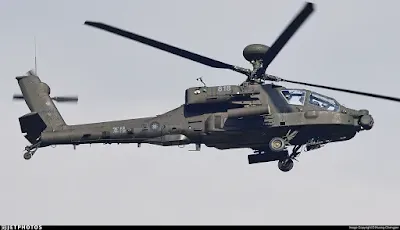 |
| Image: The AH-64E Apache Helicopter of the Taiwanese (Republic of China) Air Force. Image Source. |
Logistically wise, the proximity of the country from the five aforementioned users in the Asia-Pacific region means immediate accessibility for spare parts and supplies for these helicopters to be continuously operational and responsive for its design in line with the duties and responsibilities given in a military as well as for the interoperability among the users as to learn new skill sets and techniques about the best use of this platform.
Among the users, the latest country to obtain the AH-64 Apache Advanced Attack Helicopters as of posting date is Morocco, of which the prospective sale of the deal involved comes at around US$ 4.25 Billion (Php 214,922,500,000.00 as of May 3 exchange rate of Php 50.57 = US$ 1.00), procuring at least 36 units or 6 times as many as what the Philippine Air Force seeks on the aircraft along with the AH-1Z Viper option calling with the similar number.
The number of operators using this type of helicopter comes from the number of variants of the AH-64 Apache produced since its development in the mid-1970s as part of the United States Advanced Attack Helicopter Program with the original prototype coming in the form of the YAH-64, of which the variant provided for the Philippine Air Force coming from the DSCA notices will be in the form of the AH-64E "Apache Guardian" Attack Helicopter platform that in itself is the improvement over the AH-64D "Apache Longbow".
Speaking of the number of variants, there are also 17 types of the AH-64 Apache wherein it ranges from the improvements incorporated along with Boeing's development of these helicopters in production (AH-64A/B/C/D/E/F) as well as licensed production copies of the attack helicopter such as the ones built by AgustaWestland in the United Kingdom (WAH-64 Apache).
THE CHANCES
 |
| The Philippine Air Force Attack Helicopter Project has other candidates to compete with, such as the AH-1Z Viper (image above) along with the Turkish Aerospace T-129 ATAK Helicopter. |
The AH-64E, shall it be considered, may mean a lot for the Philippine Air Force in terms of capabilities as this helicopter platform comes with sophisticated subcomponents that are useful for its operations especially in terms of combat where close air support is needed, although things are not surprising on other candidates of the project as well given that it also obtains an advantage for the end-user to consider.
WHAT REMAINS TO BE SEEN
 |
| The United States Army AH-64D Apache Longbow. Obtained via Wikimedia Commons [link here]. |
The number of candidates for the procurement project has now increased to three with the inclusion of the AH-64E Apache Helicopter as promoted by its manufacturer Boeing Defense along with two other platforms showcased here such as the Bell AH-1Z Viper which is the latest variant of the AH-1 Cobra Attack Helicopter Family and the Turkish Aerospace Industries' licensed copy of the A-129 Mangusta which is the T-129 ATAK Helicopter.
The package as provided by the Defense Security Cooperation Agency or DSCA on the prospective potential sale of the AH-64E Apache Guardian Advanced Attack Helicopter comes with sophisticated subcomponents and munitions where it provides a lot for the Philippine Air Force's capability especially in the firepower it provides in close air support operations, although it may get reduced upon thorough negotiations that may come with the deal.
Currently, the Bell AH-1Z Viper stands a chance for the acquisition project since it has commonality between other units in service with the Philippine Air Force aforementioned wherein the platforms produced by this company already served the military branch with the sense that it obtains a significant market share and also the reputation that comes with it in a manner that choosing such platform benefits logistical chains for MRO or Maintenance, Repair and Overhaul operations in the long run.
As for the T-129 ATAK Helicopter of the Turkish Aerospace Industries meanwhile, it is worth mentioning that a notice of award has already issued for the supplier while the contract is pending due to the highlighted concern over the helicopter's engine fit, citing potential delays on what is to be considered the most cost-effective option among the three candidates.
With the concerns and dilemmas that the Turkish Aerospace Industries faced with its T-129 ATAK Helicopter powerplants, it is worth be seen regarding the outcome of its issue in regards to the Attack Helicopter Acquisition Project of the Philippine Air Force as it gives consideration for both the Bell AH-1Z Viper and Boeing AH-64E Apache Guardian for its package, affordability, and capability as delays wreak havoc on the project timeline.
Let it be noted that this procurement project is for the Philippine Air Force to increase its dedicated attack helicopter fleet which augmented its existing light attack helicopters like the AW-109 Power as well as the operational MD-520 helicopters where it may get replaced eventually. These plans are to have better-equipped Armed Forces of the Philippines to carry out their sworn duties and responsibilities before the nation, for a minimum credible defense posture by the year 2028.








